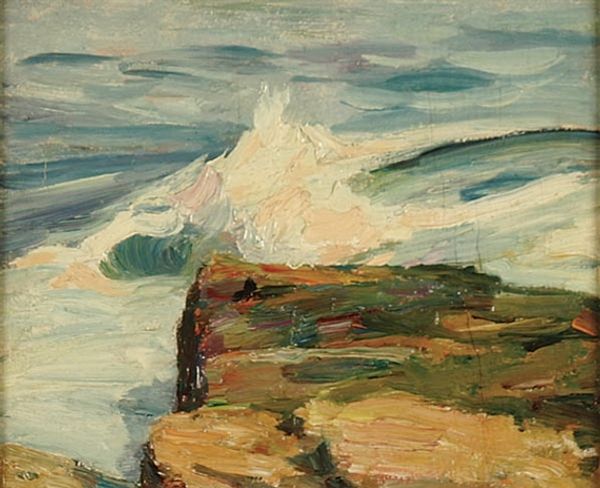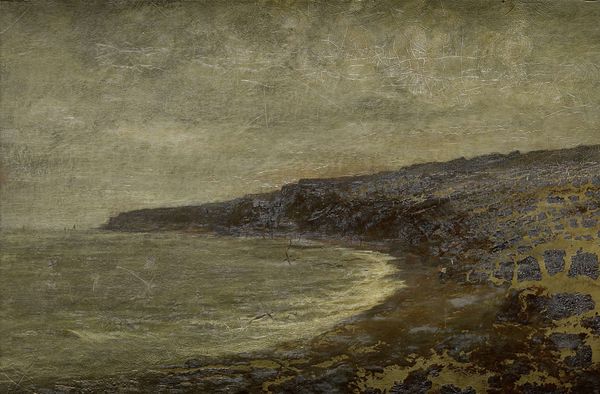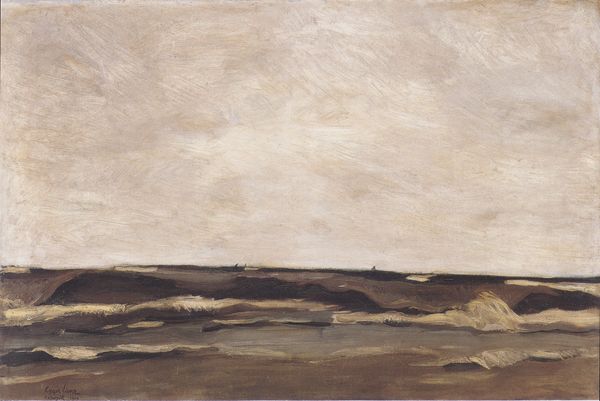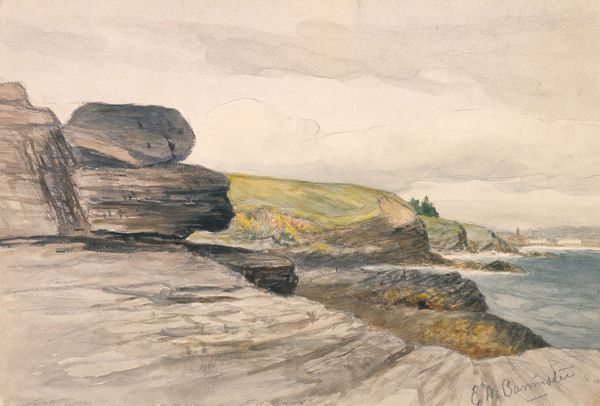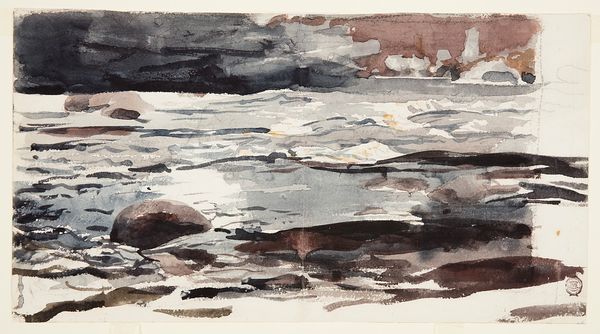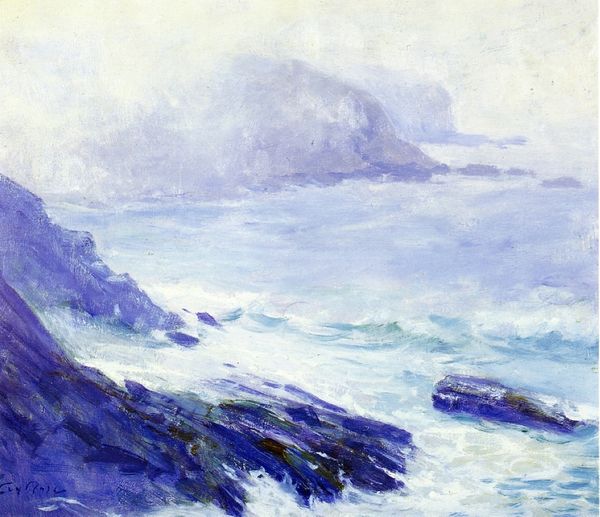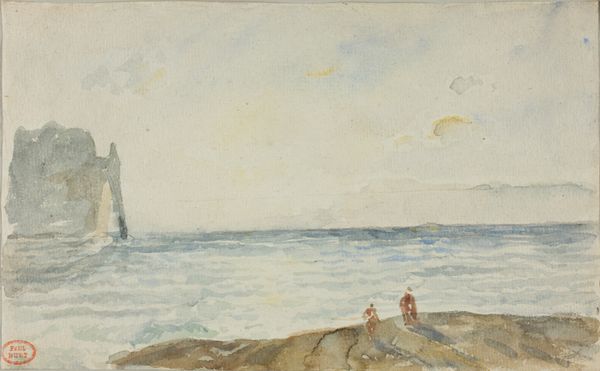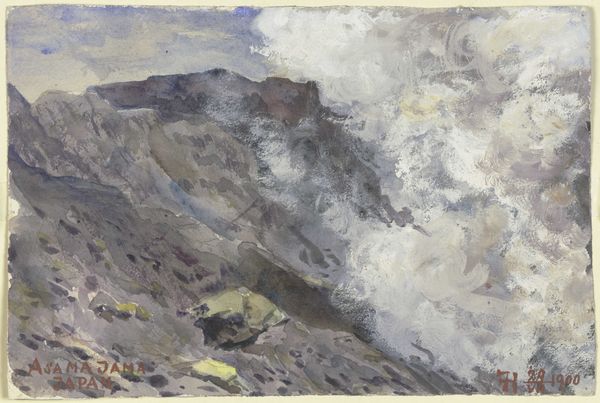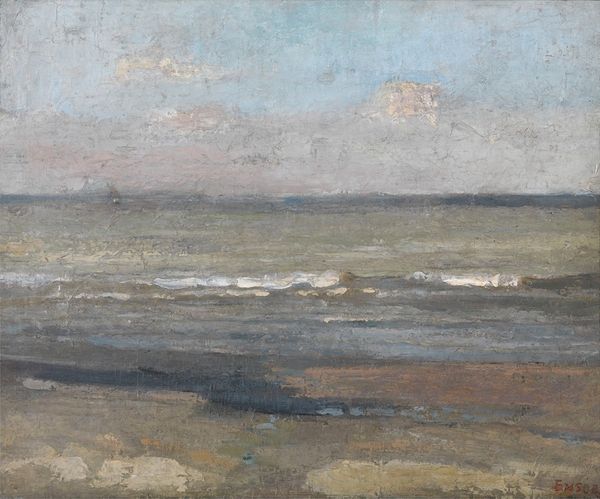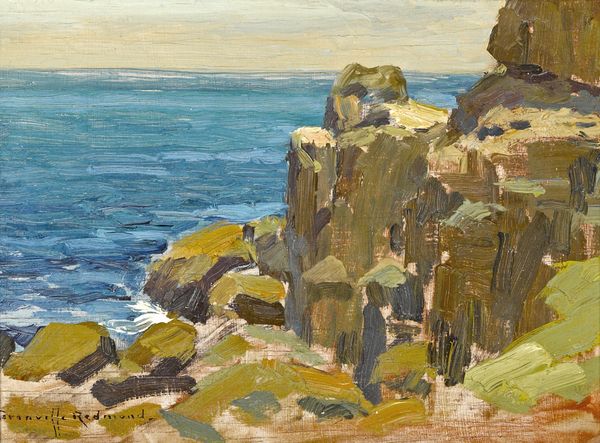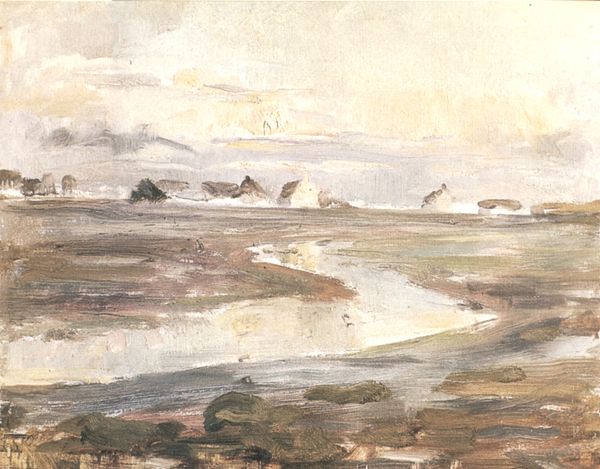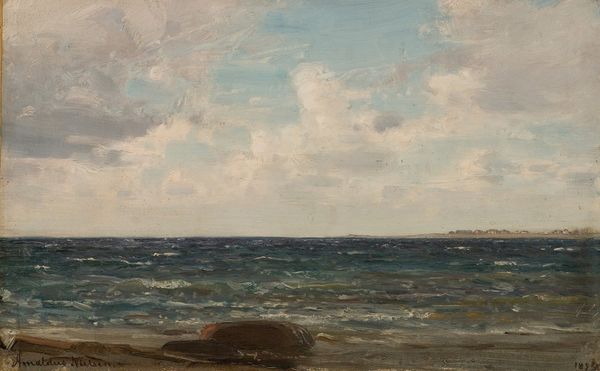
plein-air, oil-paint
#
impressionism
#
plein-air
#
oil-paint
#
landscape
#
impressionist landscape
#
oil painting
Copyright: Public domain
Curator: Standing before us is a work entitled "Rocks and Shore" by Nathaniel Hone the Younger. Executed with oil paint, it immediately suggests the artist's commitment to the plein-air approach and reflects impressionistic stylistic qualities. Editor: It strikes me as somber, even a bit melancholic. The muted palette and the rough, almost chaotic brushstrokes give it a sense of being unfinished or in progress, like a fleeting moment captured quickly. I see dark water dominating most of the composition and there seems to be an implied contrast with a paler sky above. Curator: Absolutely. Hone's embrace of Impressionism and landscape painting took him outdoors to observe the fleeting effects of light. It marks a shift away from the structured, studio-based art that dominated academic painting at the time. He worked with thick applications of paint on-site to capture this dynamic sense of light and atmosphere. The piece is not as much a literal depiction of a place as an artistic study of what he was seeing and feeling at the time. Editor: It really draws me to thinking about the kind of labor involved to even achieve such a picture in such conditions; just imagine lugging those materials to a rocky shoreline to work en plein air and how physically taxing it must have been to complete even such small paintings. Curator: Certainly, and let's consider the art market too. Artists who painted scenes like this helped popularize the countryside and seaside as leisure destinations, which aligns neatly with the rise of tourism in late 19th-century Ireland. The appeal resided not just in the scenes, but in the status of owning paintings rendered using impressionistic plein-air techniques. Editor: The facture feels so present—all that visible brushwork and the earthy tones make you consider the painting’s existence as object, not just image. Curator: The work, while seemingly small and humble, invites questions about art's role in shaping cultural perceptions of landscapes, its connection with broader economic shifts, and its capacity to influence society. Editor: I leave with an appreciation for how materials and production can offer access to different ways of thinking about land and leisure. It provides a way for us to understand that a place exists due to our complex involvement. Curator: A perfect reflection on art, its socio-historical implications, and enduring visual appeal.
Comments
No comments
Be the first to comment and join the conversation on the ultimate creative platform.
